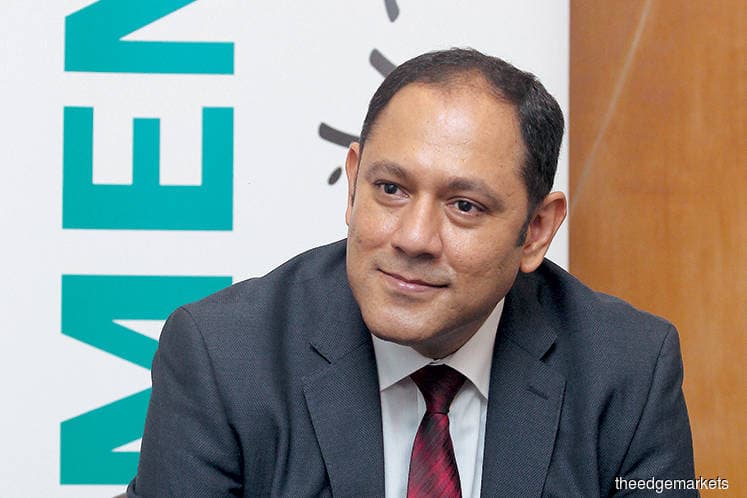
This article first appeared in The Edge Financial Daily on May 30, 2018
KUALA LUMPUR: Siemens Malaysia Sdn Bhd is on the lookout for opportunities to work on more large power generation projects, boosted by Tenaga Nasional Bhd’s (TNB) decision to maintain its reserve margin at about 30% in the near future.
Reserve margin or backup supply refers to the amount by which TNB’s total electric power capacity exceeds the maximum demand.
Siemens Malaysia’s newly appointed president and chief executive officer Indranil Lahiri said TNB’s decision would mean additional power capacity, involving larger power generation projects for Siemens.
“It is good news for us. Knowing that there will be some power plant projects to be phased out in the next five years, I think we should be acquiring an additional power capacity of about 700mw to 800mw every year based on my calculation,” Lahiri told The Edge Financial Daily.
“Right now I don’t see any project that reaches the maturity level,” he said. “So, in terms of viability, it is too early to say or comment on these projects that you hear from the market. You have to wait for at least six to eight months before you can hear about any concrete movement.”
Lahiri, who has over 22 years of industry experience including 18 years with Siemens India and Bangladesh, said the group will thus have to wait to see which of the proposed projects in Malaysia will finally materialise.
“There should be someone to see whether it makes sense or not to invest in a new power plant project with new technology or just to pump in some extra money and extend the life of the old power plant,” he a suggested.
Upcoming power plant projects in Malaysia include the 1,000-1,2000mw combined cycle gas-fired power plant in Pulau Indah and the Jimah East Power Plant in Port Dickson that will generate 2,000mw of electricity.
Lahiri said Malaysia’s present power generation capacity of more than 20,000mw is adequate. “It is sufficient and we also have TNB’s reserve to meet any sudden demand peak,” he said.
However, Lahiri is hoping that Siemens can install its advanced HL-class gas turbine in some of the power plant projects.
“Yes, definitely we have planned to bring the HL-class gas turbine into Malaysia. The next opportunity will be on this machine.
“We saw that there is an interest in this machine by our clients in the near term but we have to wait for the power plant projects to materialise first,” he said.
Lahiri said Siemens is also embarking on digitalisation (instead of electrification and automation) to enable maximum availability, flexibility and plant optimisation to further boost its business operation.
This, he said, entails tackling urban growth, climate challenges, a changing landscape and the rising volume of demand for power and energy.
“When we talk about digitalisation we need to look into a few segments such as the design, planning, operation and service.
“So this is the biggest challenge and going forward this is my main focus on how to take digitalisation to a higher level because the adoption of digitalisation is still at an infancy rate in Malaysia,” he said.
Lahiri, who joined Siemens Malaysian in February, brings with him a wealth of experience in various verticals of the business, including digitalisation initiatives.
He said Malaysia must consider efficiency, performance and reliability when deciding on power generation.
“Based on my experiences and observation, my suggestion for the new government is to go for an alternate power generation with a mixture of gas turbine and leveraging on digitalisation and technology to bring down operating expenditure especially the maintenance cost,” he said.